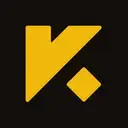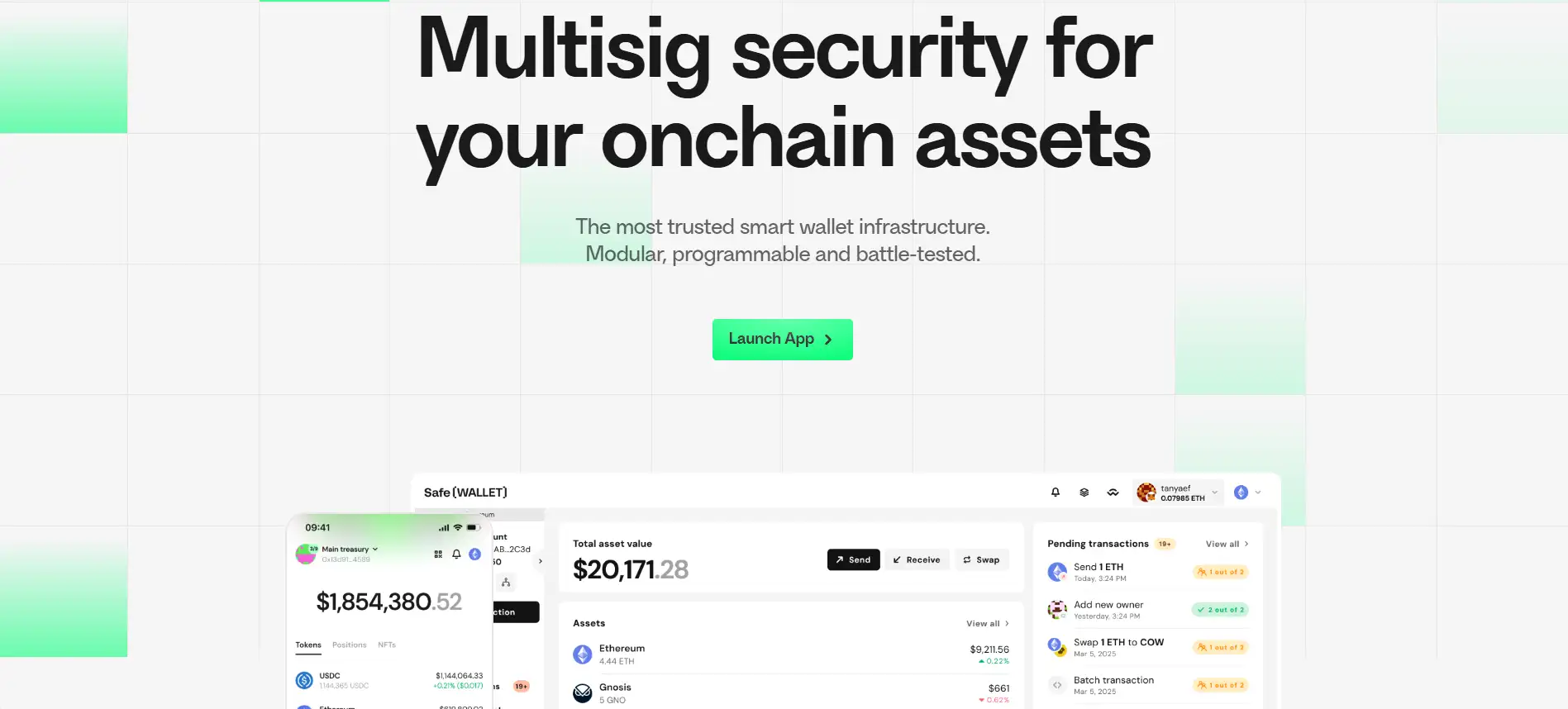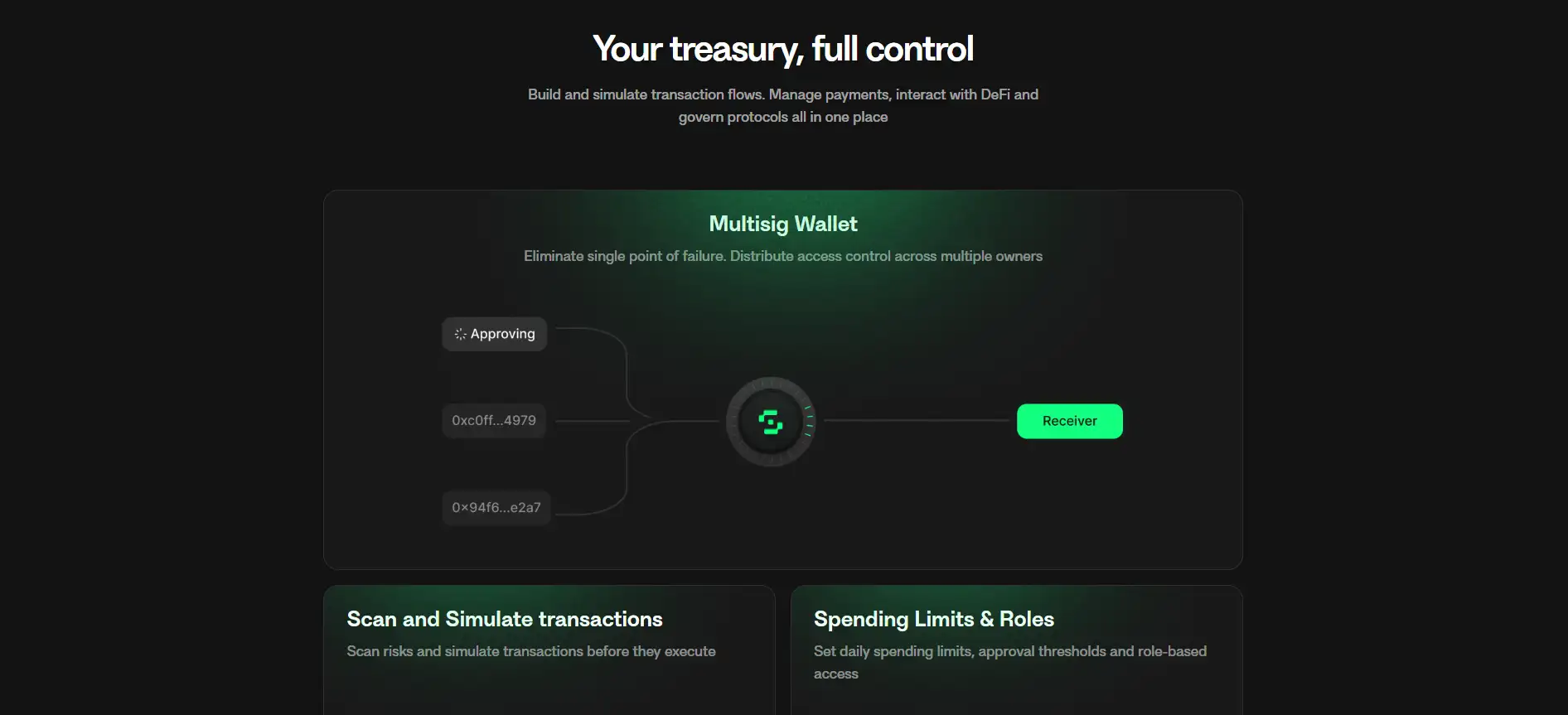About Safe
Safe is a leading platform for managing digital assets on the blockchain through secure, composable, and programmable smart contract wallets. Built with the principles of privacy, self-custody, and open-source development, Safe empowers individuals, teams, and DAOs to protect and manage their crypto funds in a non-custodial way. The platform’s core product, Safe{Wallet}, is used by some of the most reputable organizations in the industry, including the Ethereum Foundation, Aave, Optimism, and Chainlink Labs.
With more than $1 trillion in transaction volume processed and over 57 million wallets deployed, Safe has established itself as the most trusted smart wallet infrastructure in the space. Its battle-tested, audited, and modular architecture ensures that users retain full control over their assets with advanced security setups like multisig access, role-based controls, and programmable transaction flows. Safe is not only an infrastructure provider but a pivotal building block for Web3 scalability and self-custody.
Safe is a decentralized smart account protocol that delivers secure self-custody for individuals, institutions, and protocols. Initially spun out from Gnosis Ltd., the project has matured into an industry-standard for secure asset management, especially for users who require multi-party authorization and advanced access control. From its inception, Safe has prioritized user sovereignty by allowing organizations to build programmable access to funds using formal verification, multisig configurations, and fully open-source infrastructure.
The platform provides a rich toolkit for different user profiles—DAOs, foundations, DeFi teams, and advanced individuals—who need to execute complex operations securely and transparently. Safe{Wallet} is the most prominent product in the Safe ecosystem, and it enables users to manage assets across multiple networks while interacting seamlessly with 200+ integrated dApps. Features like transaction simulations, spending limits, and signer roles allow organizations to set granular controls, reducing the risk of key compromises or unauthorized fund transfers.
One of Safe’s standout advantages is its modular design, which enables developers to extend wallet functionality through modules, plugins, and SafeApps. This has made it a flexible base for integrating features like on-chain governance, automated payments, or account abstraction. Notably, Safe offers complete portability and avoids vendor lock-in, in contrast with custodial wallets or off-chain MPC solutions like Fireblocks.
Security is at the heart of Safe’s offering. The platform uses formally verified smart contracts and supports trustless recovery mechanisms to ensure that users never lose access to their funds. Furthermore, Safe has been audited by leading firms including OpenZeppelin, Runtime Verification, Certora, and Ackee. Safe also stands out among competitors like Argent, Zerion, and MetaMask by providing a modular, open-source alternative without centralized dependency or lock-in.
The Safe Foundation oversees the protocol’s decentralization efforts, including coordination with SafeDAO, governance development, and ecosystem growth. It ensures alignment with Safe’s founding principles: privacy as a right, user ownership, and permissionless innovation. With ongoing development into mobile access, account abstraction, and institutional-grade modules, Safe is positioning itself as the foundation for a trillion-dollar on-chain economy that does not compromise on freedom or transparency.
Safe provides numerous benefits and features that make it the industry’s most trusted infrastructure for smart contract wallets:
- Battle-Tested Smart Contracts: Safe’s contracts are formally verified, audited multiple times, and used by high-profile protocols like Aave and the Ethereum Foundation.
- Multisig Security: Replace single private key vulnerabilities with N-of-M signing structures to reduce single points of failure.
- Role-Based Access: Define roles such as “approver” or “initiator,” and set spending limits and approval thresholds for safer treasury management.
- Transaction Simulation: Use built-in tools to scan and simulate transactions before they’re executed, minimizing risk exposure.
- Multichain Support: Seamlessly manage assets across Ethereum, Optimism, Polygon, and other L2s through a unified interface.
- Open-Source Infrastructure: All critical code is public, reproducible, and auditable, promoting transparency and trust.
- Composable Modules: Integrate with 200+ dApps or extend functionality using SDKs, SafeApps, and plugins.
- Trustless Recovery: Assign guardian addresses to recover access without giving up self-custody.
- No Vendor Lock-In: Fully portable accounts and signer setups ensure users can migrate freely and maintain control.
Getting started with Safe is straightforward and designed to support individuals, DAOs, and enterprises alike:
- Visit the Website: Head to the Safe official website and click on “Launch App” in the top-right corner.
- Connect a Wallet: You can connect using MetaMask, WalletConnect, or other supported wallets.
- Create a Safe Wallet: Follow the on-screen instructions to configure a new Safe account. You’ll set your network, wallet owners, threshold (e.g., 2 of 3), and give the wallet a name.
- Add Team Members: Invite other signers with their wallet addresses. Each action within the wallet will now require approval based on your configured threshold.
- Start Managing Assets: Use the interface to send and receive tokens, interact with DeFi apps, manage treasuries, set limits, and more.
- Enable Modules: Explore Safe{Apps} to extend your wallet's functionality—swap, stake, manage DAOs, or integrate governance tools.
- Use Mobile Apps: Download the iOS app or Android app to sign and manage transactions on the go.
- Read the Docs: For advanced configurations or integration with your protocol, explore Safe’s developer documentation.
Safe FAQ
Safe eliminates the traditional single-key risk by using multisig smart contracts, where multiple wallet owners must approve transactions before they are executed. This means that no single user has full control over an organization’s funds. For example, a team can configure a 3-of-5 signing structure where three members must confirm any transaction. This model provides enterprise-grade security and aligns with Safe’s mission of eliminating single points of failure. Users can set up this structure directly in the Safe App and define roles and permissions tailored to their team’s needs.
The modular architecture of Safe is designed to empower teams and protocols to customize their wallet infrastructure for different use cases. Developers can extend Safe’s functionality through SafeApps, SDKs, and modules, enabling integrations like on-chain governance, transaction batching, or account abstraction. DAOs use these modules to automate voting, treasury disbursement, and multisig verification in a fully transparent, auditable way. This flexibility turns Safe from a simple wallet into a programmable financial operating system for Web3 organizations.
Safe introduces a trustless recovery model, which allows users to nominate guardians who can help restore access in the event of key loss—without giving control of the account to anyone else. Unlike traditional custodial solutions, Safe’s recovery setup uses smart contract logic instead of centralized recovery services, ensuring that users maintain full ownership of their assets. Organizations can configure these guardians directly from the Safe dashboard or by deploying a recovery module, offering both resilience and autonomy.
Leading Web3 protocols such as Aave, Optimism, and Chainlink use Safe{Wallet} for their on-chain treasuries due to its unmatched security, audit transparency, and multi-signature flexibility. These organizations handle billions in assets and require deterministic, formally verified contracts that have undergone extensive audits by OpenZeppelin and Certora. By using Safe, these entities gain robust treasury management, role-based permissions, and seamless integration with DeFi protocols—all while remaining fully on-chain and transparent.
The SafeDAO governance framework enables token holders and community members to influence the future of Safe directly. Instead of relying on a centralized company, decisions like protocol upgrades, ecosystem grants, or fee models are made through on-chain proposals and votes. This governance system ensures community alignment and transparent development, allowing Safe to evolve according to user needs. SafeDAO operates under the Safe Foundation, which maintains open collaboration and upholds the platform’s principles of self-custody and privacy.
You Might Also Like












